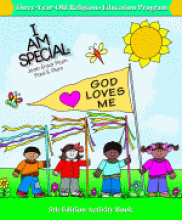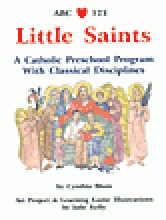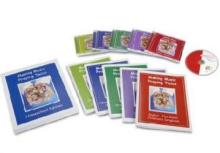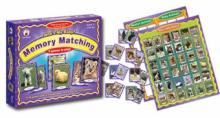Preschool Programs
Five In a Row - Literature-Based Unit Studies for young children
The Story of Ping by Marjorie Flack:
On Monday after reading the story you give a Social Studies lesson. We found China on the world map, and the Yangtze River. The curriculum guide points out that the Yangtze is the 3rd longest River after the Nile and Amazon; locate those on the map. Nearly one third of China's population live on or near the Yangtze River, in fact 1 of every 15 people in the world live along the Yangtze River. The children color a story disk (small picture of Ping) and place it on the world map along the Yangtze River. I expanded this to also making the flag of China from construction paper, discussing Chinese food, going to a Chinese restaurant and eating with chopsticks, and had the waiter speak Chinese and sign our placemat in Chinese. Another lesson under social studies is the lesson of discernment. The child is asked to describe Ping's lesson about discernment: " everything that looks good is not necessarily good". We went on to discuss never taking candy from strangers, whether they should go along with friends' decisions even if it doesn't seem quite right and how mom and dad help train good decisions, sometimes even with a spank like Ping received.
On Tuesday, after reading the story, you teach Literature: define a classic, find the publishing date, explain that the Story of Ping was written when your Grandmother was your age. The authors suggest starting a Literature notebook with a section for literary terms, and a section for vocabulary, (using index cards is the alternative suggestion). Define and write the definition of a classic and fiction in your notebook. Teach the literary device of repetition and show how it is used in the story, bringing it "full circle". Add repetition to your notebook. We expanded this to adding the title of other books we had read under each definition, which qualified as an example.
On Wednesday, after reading the story, teach art. What medium does the illustrator use? (colored pencils) Use colored pencils to draw your favorite illustration. Learn to draw water. Look at how the illustrator draws the suns reflection on the water and try it. Learn to draw water movement around an object in the water, growing concentric circles, and try it. Create the illusion of motion in the water with squiggly lines trailing behind the boat and practice it. Teach about viewpoint. The illustrator uses viewpoint (and they point out examples throughout the book) and how this changes how we see a scene or the world around us. Teach composition and the author again points out examples of good composition with illustrations throughout the book.
On Thursday, after reading the story, have a Math lesson counting Ping's sisters, brothers, aunts and uncles. [math in this program is too contrived to stand alone]. I also have the Christian supplement to FIAR so we did that here. This gives 2-4 scripture verses or bible stories which parallel the FIAR story and give a great basis for more discussion on character training, godly behavior, etc.
On Friday, after reading the story, teach science. Concepts related to this story are...where are ducks placed in the animal classification system, bouyancy, health and safety concerning water (children are not bouyant like ducks!), and reflection of light off water. The author suggests other literary imagery of reflection in the poem "The Mirror" in The World of Christopher Robin (Milne), which one could use as memory work or copywork.
We never spent just one week on most stories. I think this book ended up being 3 weeks long because we chased down bunny trails to study China in more detail, bouyancy and experiments took several days and learning more about ducks, their habitat, diet, etc. was a week. We culminated the week with a trip to the duck pond and decided it was a good idea to start swimming lessons.
The author of FIAR has chosen solid children's literature. My only critique is that some books are out of print and a little difficult to find. The FIAR web site used to sponsor a list for people interested in using this guide. People would share ideas on expanding the books, resources, and trade/sell each other some of the harder to find books. Each FIAR volume contains lesson guides for about 16-20 books. The authors have also written a preschool version called Before Five In A Row and a Beyond Five In A Row, using chapter books. I believe booklists for each of these volumes is available at their web site.
How is this helpful for Catholic homeschoolers? Well, it is one way to introduce children to tried and true, good children's literature. It has taught me a whole lot about analyzing a story and illustrations. It is a great method for teaching story composition, introducing new vocabulary, and isolating literary devices. I recommend it whole heartedly to the Pre-Grammar stage, for developing attentiveness to details, introducing them to art, geography, science and reviewing math skills.
Also, the guide is user friendly. Anyone who has enlisted the help of an older child to help teach their younger children could hand this to a 12+ yo and they could probably manage fine, as well as learn some new things, as I have!
I Am Special
This religious education program contains 30 lessons and assumes that one lesson will be completed in a one-hour class each week. Unit One includes thirteen lessons designed to help children develop positive attitudes about themselves by learning about names, hands, feet, and the five senses. Unit Two's eleven lessons investigate various things given to us by God, such as families, friends, animals, and trees. Unit Three's five lessons focus on the holidays of Thanksgiving, Advent, Christmas, Valentine's Day, and Easter/Spring. The final lesson is on Growing. A heavy emphasis is placed on music and singing, as well as finger play activities, of which some are original and others traditional. An optional music cassette or CD is available but was not reviewed. Each lesson's craft activities may require a teaching assistant as many involve cooking, baking, scissors, or messy materials. Despite the detailed organization, considerable preparation time is necessary for many lessons.
One weakness of this popular program is that it is generically Christian. I can easily see this course being used in a preschool religious education classroom of any Christian denomination. The religious content includes a very brief, original, conversational prayer in each lesson, references to God with very simplistic adaptations of Bible verses, and a very simple retelling of the Christmas and Easter stories. No content was noted as being specifically Catholic. No priest, religious, or saint figure appears among the 105 flannel board figures. There are no church or crucifix images. There are no traditional Catholic prayers, even the very simplest Sign of the Cross, other than a meal blessing. No catechetical information of any kind is taught directly. With such a strong emphasis on music, this course could have easily begun teaching basic Catholic prayers or traditional hymns by taking advantage of the ability of children of this age to memorize easily.
5th edition, Nihil Obstat, Imprimatur
Teacher's Guide (spiral-bound softcover, 236 pages plus appendices), Student Activity Book (softcover 112 pages), Blackline Masters (Looseleaf, 62 pages), Flannel Board Packet (Looseleaf cardstock, 20 pages)
Little Saints
I'm just thrilled with it the Little Saints program on my first overview. The subtitle of the book is "A Catholic Preschool Program with Classical Disciplines", and it is just what I wanted last year! I'm going to try it with my soon-to-be-3 year old and my Kindergartner this year.
Last year, I purchased one of the Five in a Row (FIAR) volumes, but FIAR just didn't mesh well with our gang. My 4 year old (who is the size of an 8 year old and looks like a meat packer, but is really an "artsy" teddy bear at present) was bored by re-reading the same book for a week, and he wasn't too thrilled with the question/answer/research type of work. He wanted to MAKE things and read MORE books...sounds like his mama!
The Little Saints program is *not* a phonics or math or "academic" preschool program, although phonics and handwriting and basic math information is included. It is heavily based in literature, religion, and the arts. I'm overwhelmed as it is *just* what I would have wanted to do had I the proper background....and a dozen years of free time.
The program is laid out by month, with "themes" for each week during the months of August through May. The 40 themes are those typical of preschool: seasons, family life, animals, senses, people around the world, and so on. Each theme is organized into a 3-day school week, with many ideas of activities for that day.
Every "day" has notes for the teacher as to the basic goal of the day, a short quote from the Bible (which I will be using for copywork for my Kindergartner), storytime, nursery rhymes, poetry, story-telling and finger plays (memory work), songs and circle games, at least one learning game, and an art project. The first pages of each week/theme clearly lays out for the busy parent: exactly what materials are needed for each game and each project, a listing of the skills being worked on that week, a listing of correlated classical music for music appreciation, and a long listing of picture books on the theme of the week. Most of the titles of the picture books are familiar to me, so they are either "classics" or easily found at the library.
The appendices include the text of the rhymes and finger plays and songs. The author notes that if you repeat the program for a second year that you will notice a considerable difference between a 3 year old child and a 4 year old child.
In short, I'm just thrilled with this program.




